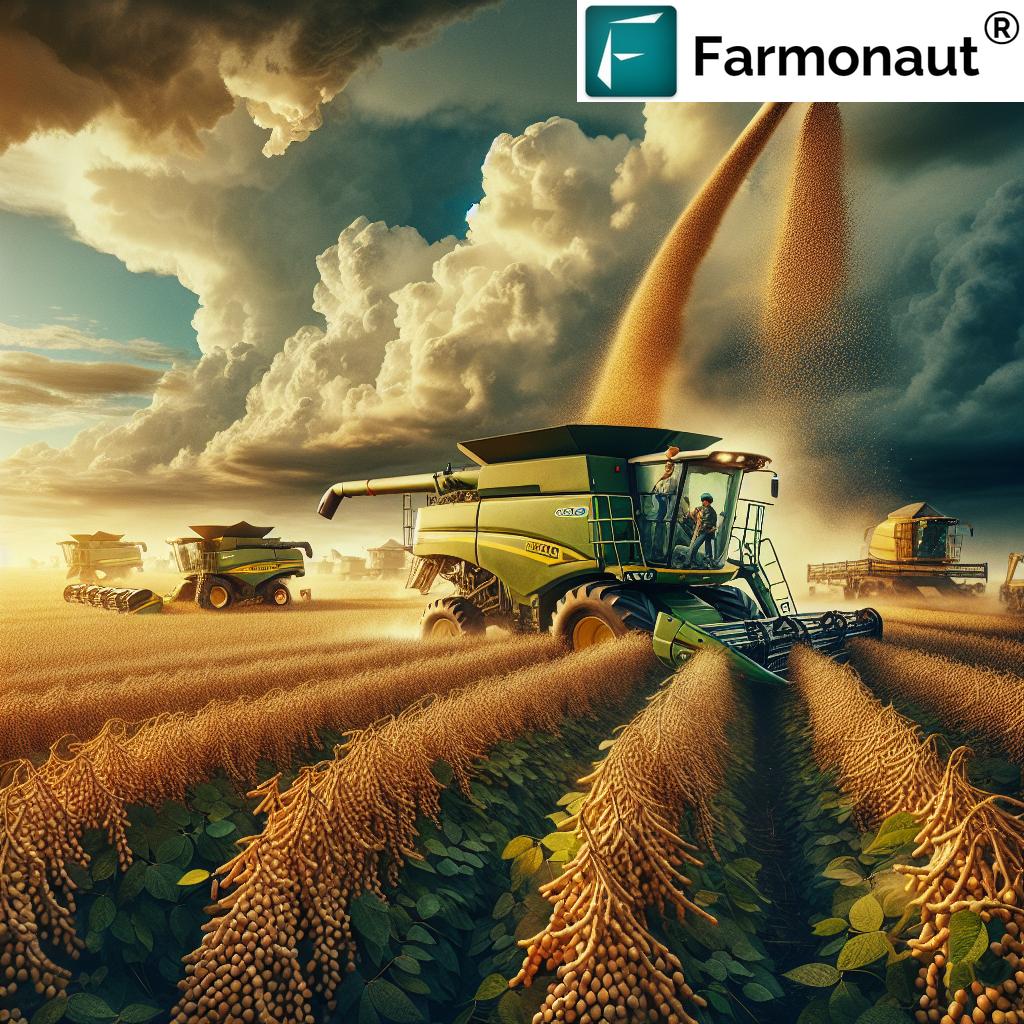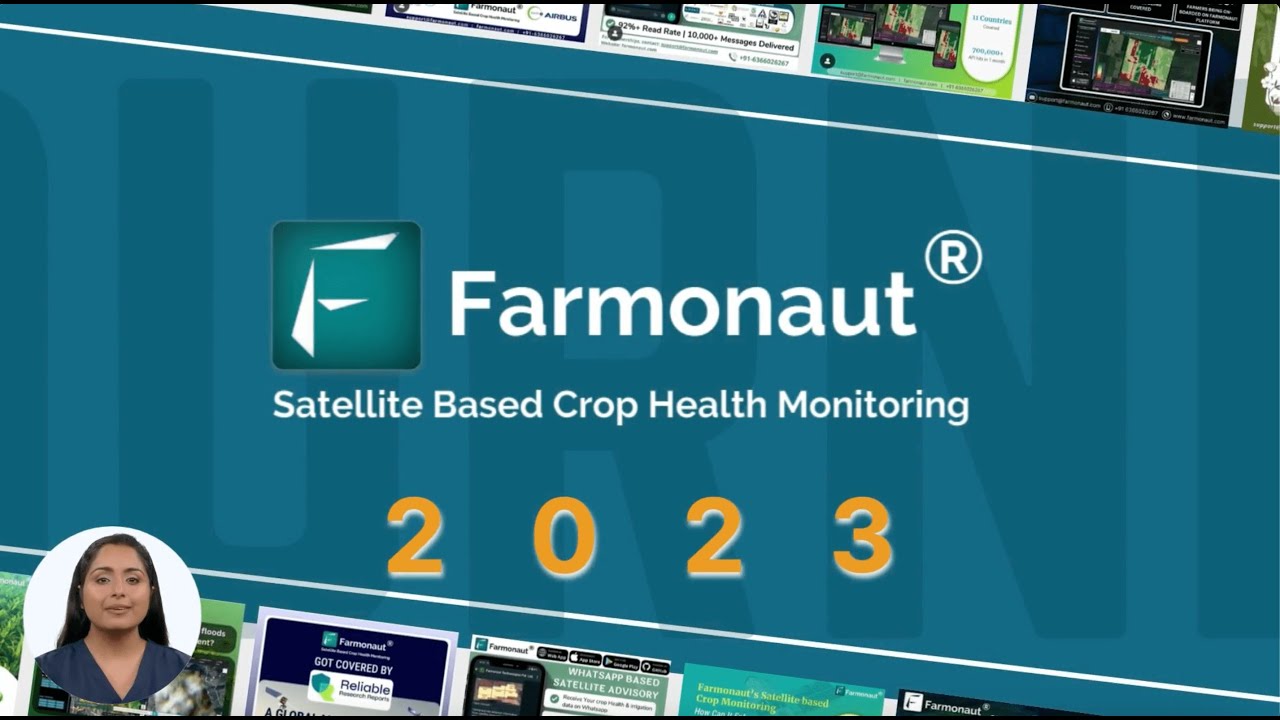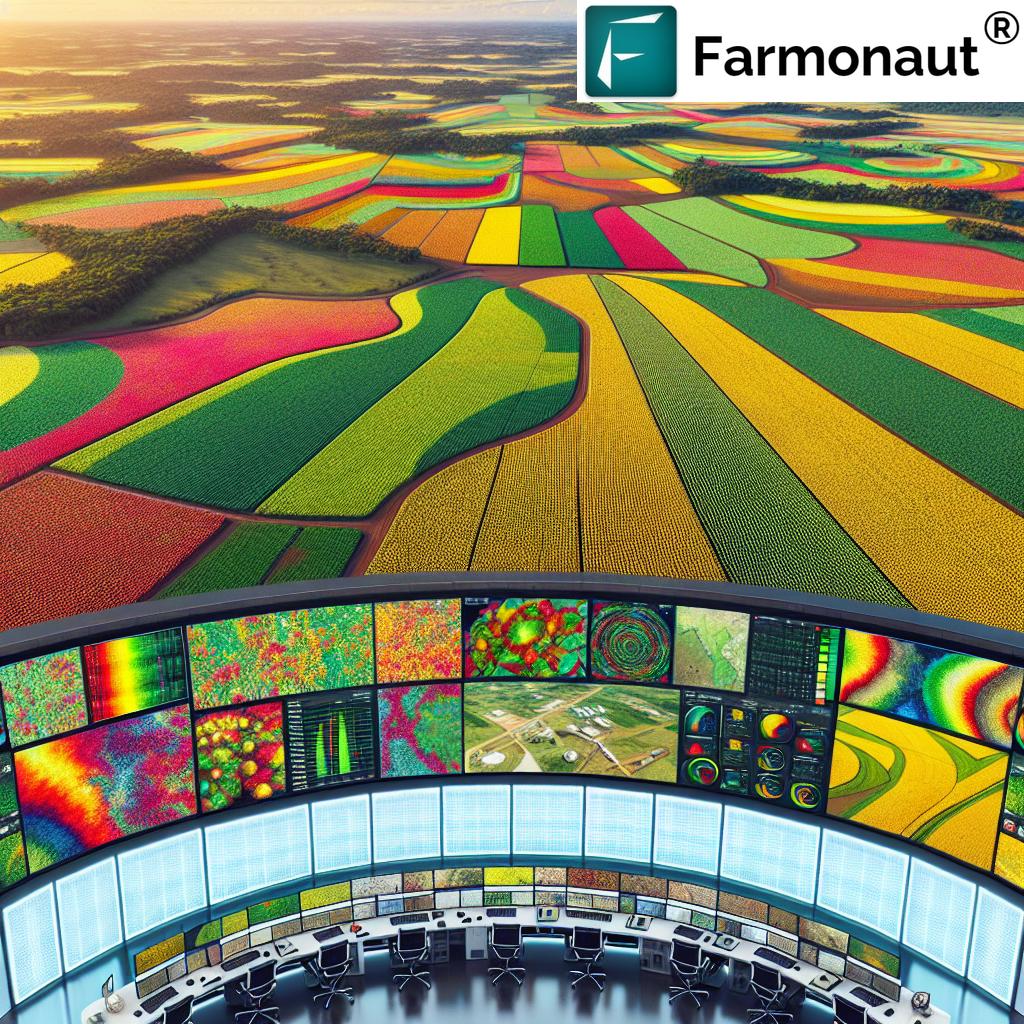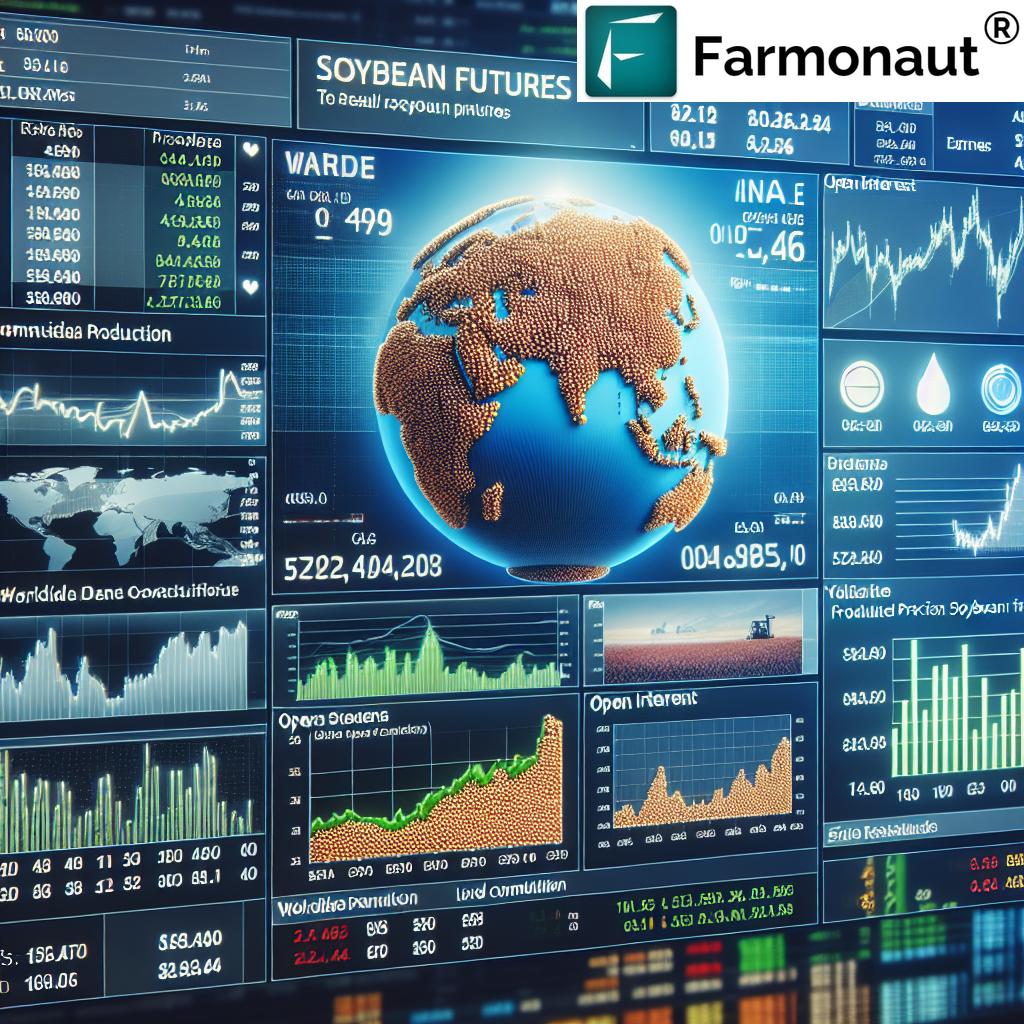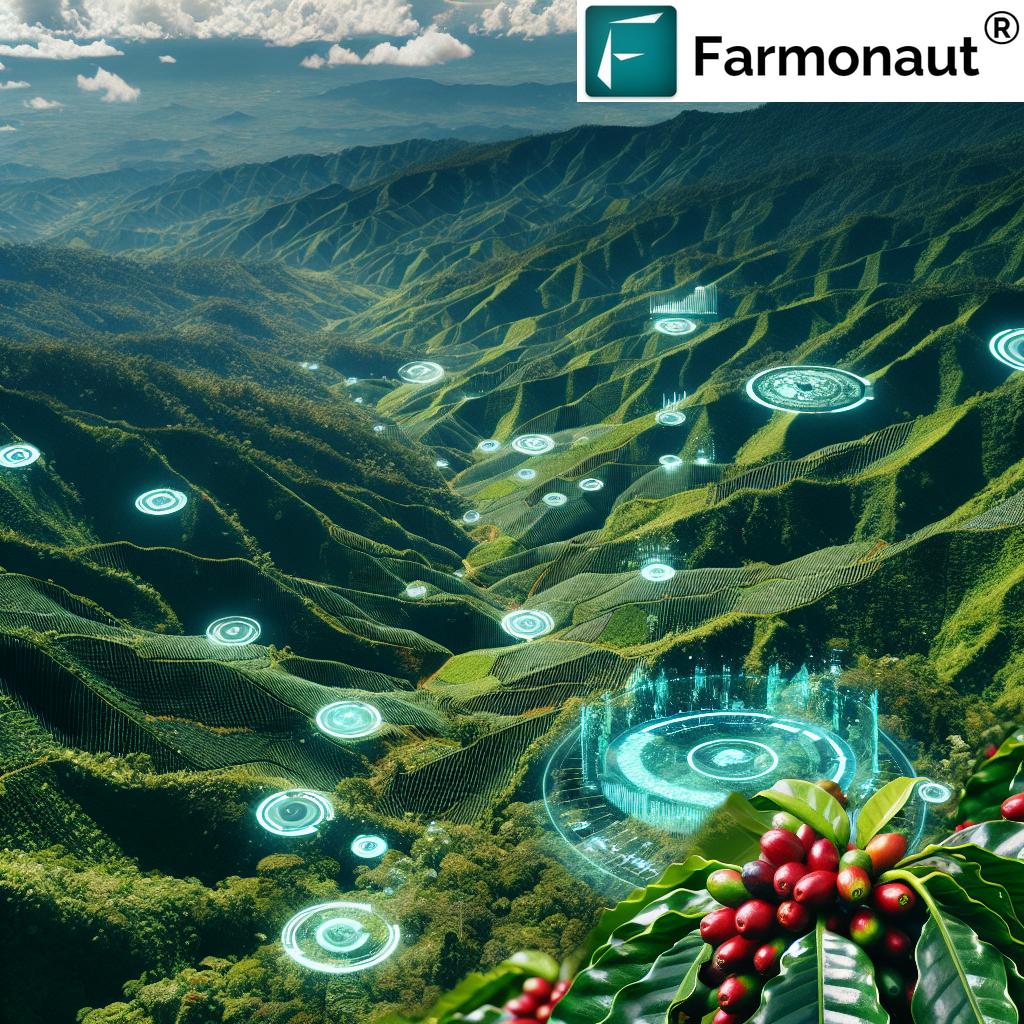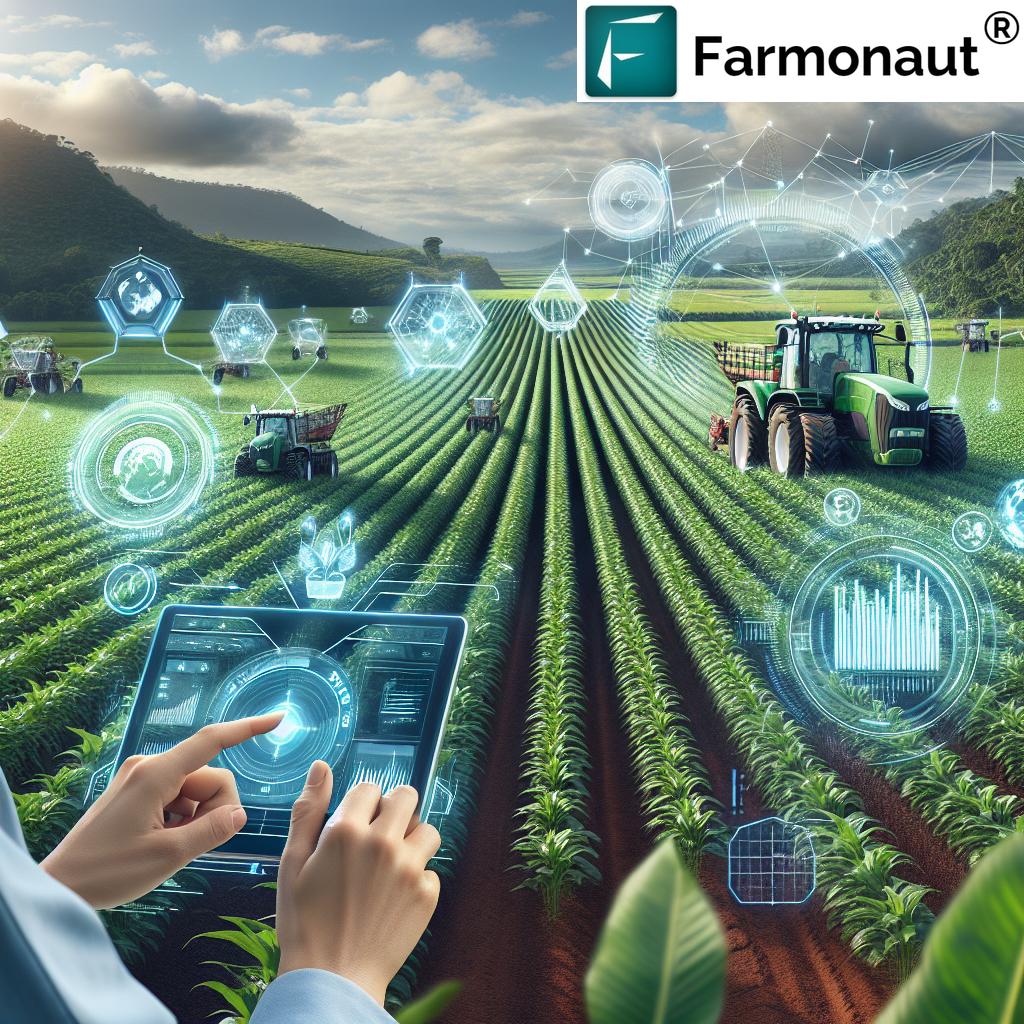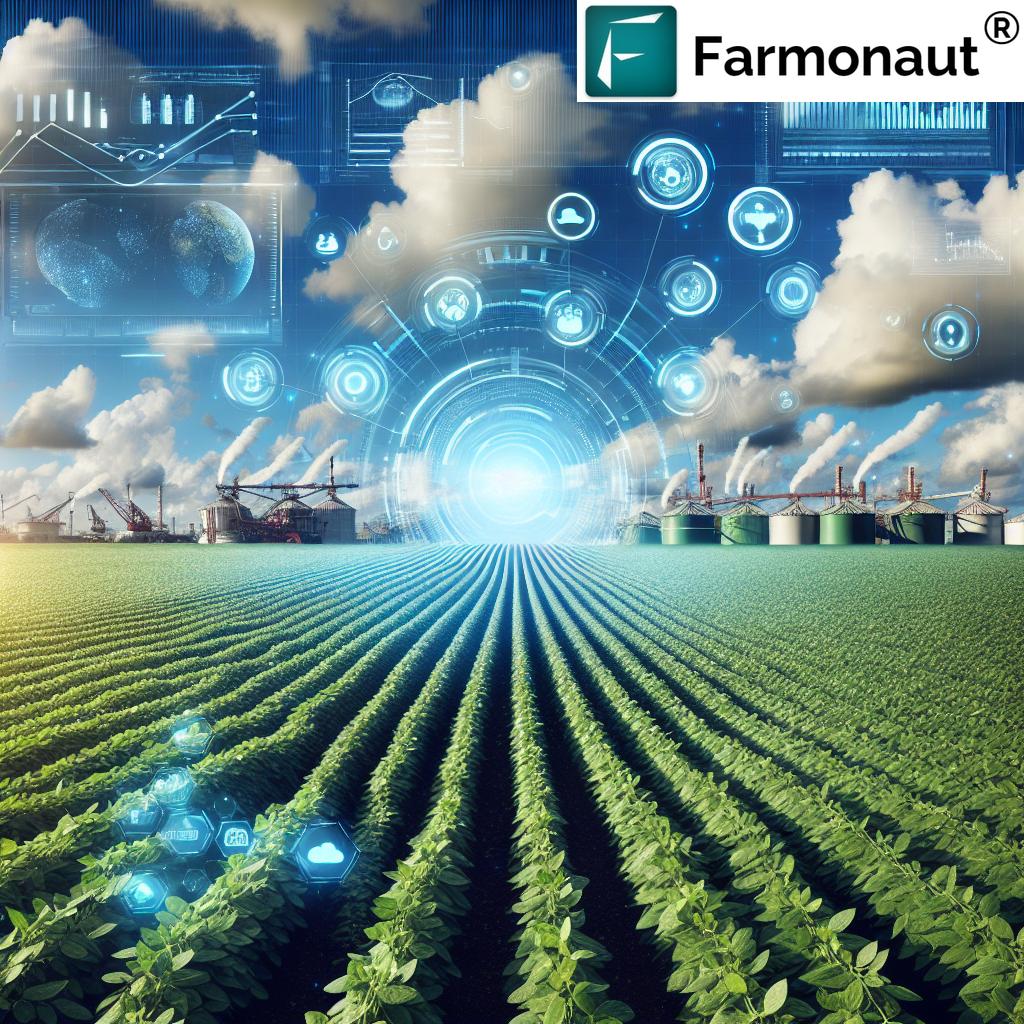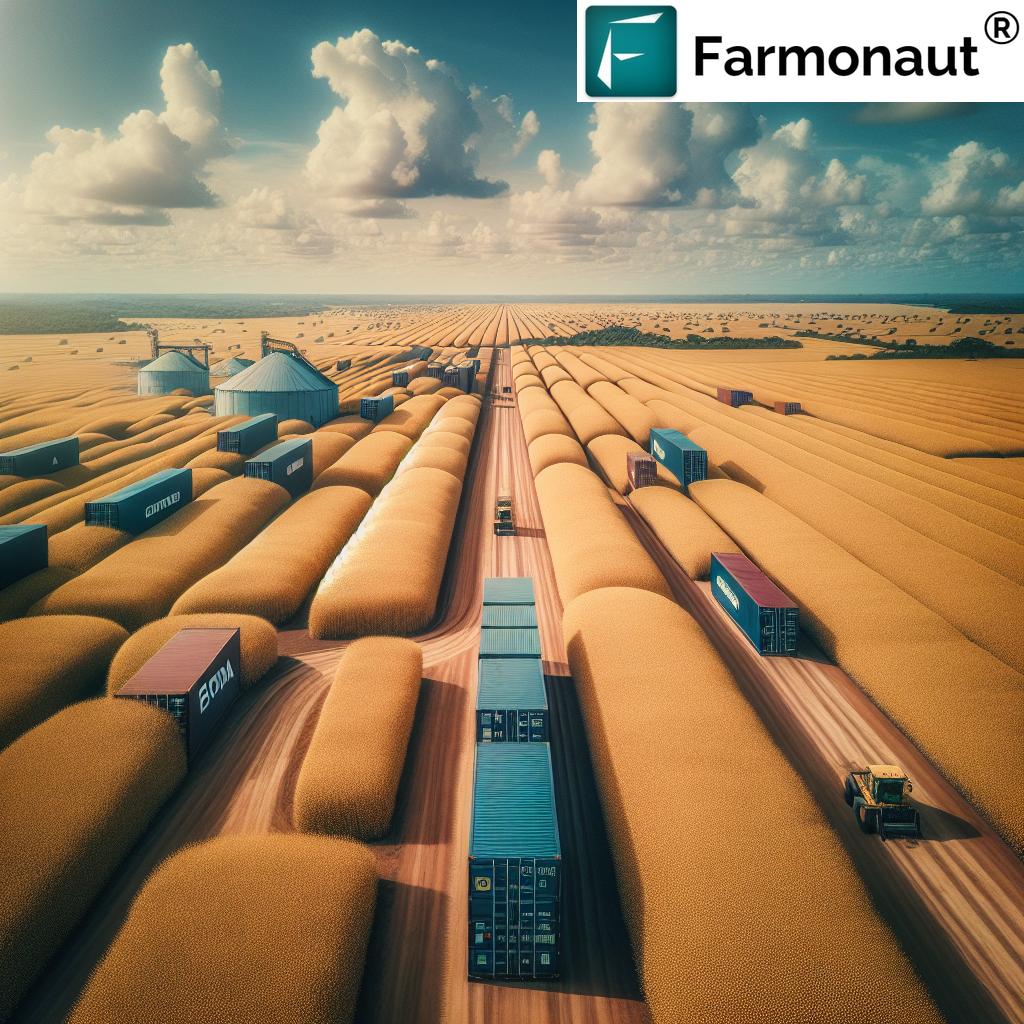Brazil Soybean Weather Shocks 2024: Yields & Surprises
“Brazil’s 2024 soybean yield dropped by 8% due to unexpected weather shocks, impacting global supply chains.”
Introduction: Brazil’s Soybean Industry in a New Climate Era
As the world’s largest producer and exporter of soybeans, Brazil is at the center of global agricultural and economic conversation. Our nation has solidified this position through a mix of favorable climatic conditions for soybeans, technological advancements in Brazilian agriculture, and strategic farming practices. Yet in 2024, we have witnessed a sobering reminder of how the future of soybean farming in Brazil is shaped by intertwined weather shocks, economic shifts, trade policies, and environmental realities. In this blog, we comprehensively explore Brazilian soybean production trends, climatic challenges, technological pivots, and the future trajectory of this vital industry—all with actionable insights for stakeholders.
Brazilian Soybean Industry Overview: Position, Growth & Opportunity
Brazil’s soybean industry stands as a pillar of our agro-economy, generating billions in revenue and supporting rural livelihoods across diverse regions. Over the past decade, a combination of increased planted area, improved genetically engineered (GE) seeds, and climatic conditions for soybeans—namely ample rainfall and suitable temperatures—propelled us to elite global status. As of 2024:
- Brazil surpassed the US as the world’s top soybean producer and exporter.
- Key production states include Mato Grosso, Paraná, Rio Grande do Sul, Goiás, and Bahia.
- We supply over 50% of all soybeans imported by China, with soybean export to China dominating demand trends.
- The sector fuels not only direct consumption but also the livestock, energy, and industrial feedstreams nationally and worldwide.
Despite our solidified position, underlying vulnerabilities remain, particularly around climate variability, weather shocks, and deforestation in the Amazon for soybeans.
Climatic Influences on Soybean Production: The 2024 Weather Shocks
The 2024-2025 growing season has been a defining case study of how climatic variability can alter the patterns and prospects of soybean yields in Brazil. In our collective journey through this agricultural year, the following insights proved critical:
- Center-West, Southeast, and Northeast regions benefited from abundant rainfall during strategic growth stages, ensuring robust plant development.
- Mato Grosso Soybean Yield 2024 stood out at 58 bushels per acre—a 25% increase versus last year. This was largely due to optimal conditions from October through December.
- In southern states such as Rio Grande do Sul, Paraná, and Mato Grosso do Sul, an abrupt shift came with drought, heat, and wildfires during January and February 2024.
- Regional disparities became stark: Rio Grande do Sul reported yields of only 37 bushels per acre, linked directly to extreme dryness and delayed planting.
- NOAA forecasts intensified these warnings by predicting persistent La Niña conditions until March 2025—an ominous signal for future drought effects on Brazilian crops.
These developments underscore why understanding the climatic challenges and weather patterns in all major soybean-growing regions—including Mato Grosso, Paraná, and Rio Grande do Sul—is essential for all industry stakeholders.
“Technological advancements helped Brazilian farmers recover 15% of potential soybean losses from severe climatic challenges in 2024.”
Regional Yield Disparities & Notable Growing Regions
1. Mato Grosso: Brazil’s Soybean Powerhouse
With favorable climatic conditions and widespread adoption of precision farming practices, Mato Grosso continues to lead Brazilian soybean production. In 2024, its average yield of 58 bushels per acre (approximately 3.87 tons/ha) exemplifies what can be achieved with optimal rainfall, soil moisture, and adaptive genetics.
The Mato Grosso soybean yield 2024 figures saw a substantial upturn thanks to timely planting and targeted nutrient application, providing a buffer against market shocks and export volatility.
2. Southern States: Rio Grande do Sul and Paraná
In stark contrast, Rio Grande do Sul faced severe weather shocks and drought in early 2024. The yield dropped to 37 bushels per acre (2.47 tons/ha), highlighting how climatic fluctuations can dramatically alter agricultural output. This region, alongside Paraná, also endured wildfires that delayed crop development and increased atmospheric stress.
3. Northeast and Southeast Areas: Growth through Resilience
Regions in the northeast and southeast outperformed expectations. Benefiting from sufficient rainfall during critical growth stages, farmers here saw resilient yields and demonstrated effective adaptation strategies—such as crop rotation and novel seed use—helping shield farms from otherwise adverse outcomes.
- Takeaway: The 2024 data signal the need for location-specific resilience strategies, given how regional disparities can define national outcomes.
Technological Advancements in Brazilian Agriculture: Innovations Mitigating Climatic Challenges
Amidst 2024’s climatic shocks, we have seen how technological advancements in Brazilian agriculture are more crucial than ever. Our farmers are turning to innovations that boost long-term resilience and offset the unpredictability caused by weather shocks:
- Genetically Engineered (GE) Drought-Resistant Seeds: These advanced seeds have become staples in risky regions, improving yield stability despite adverse conditions.
- Water Conservation & Irrigation: Sophisticated irrigation systems, combined with sensors for moisture measurement, further reduce vulnerability to rainfall variability.
- Crop Diversification: Alongside soybeans, planting other crops like maize and cotton reduces reliance on single commodities and improves soil health.
-
Digital & Satellite Monitoring Solutions: Data-driven farm management, such as real-time health monitoring, supports better, faster decisions—optimizing use of water, fertilizers, and pesticides.
- Farmonaut offers satellite-driven carbon footprint tracking and blockchain-based traceability, helping farmers align with global sustainability standards while boosting productivity.
-
AI-based Advisory Systems: Real-time AI insights allow for precise nutrient, irrigation, and pest management—freeing farmers from guesswork.
- Farmonaut’s Jeevn AI Advisory gives personalized farm advice and weather updates tailored to specific crops and regions for smarter, timely decisions.
These solutions—especially satellite-based platforms such as Farmonaut—help not just large agribusinesses but also individual farmers remain resilient against ongoing climatic challenges in the soybean industry in Brazil.
Resource Management, Financing, and Scalability
- Fleet & Resource Management: Tools like Farmonaut’s fleet management system enable agribusinesses to optimize harvest logistics, reducing transportation costs and delays during critical growing season.
- Satellite Verification for Loans & Insurance: Platforms such as crop loan and insurance verification by Farmonaut use independent satellite data, thus speeding up loan approvals and enabling fair compensation for weather-induced losses.
- Large-Scale Farm Management: For plantation owners, apps like Agro Admin help centrally oversee crop health, inputs, and team actions across thousands of hectares.
Did you know? If you’re an agritech developer, research group, or agri-business, you can access Farmonaut’s robust APIs for satellite data and weather updates, enabling integration into your own systems or apps.
Discover more: Farmonaut API &
Developer Docs
Soybean Trade and Economic Impact: Global Dynamics and Shifts in 2024
The soybean trade and economic impact extend far beyond Brazil’s rural borders, affecting food, energy, and manufacturing chains worldwide. The 2024–2025 period witnessed pronounced global trade shifts driven by both economic and climatic forces:
- Chinese Demand: China’s evolving import policies and price sensitivity shifted buying preferences strongly towards Brazilian soybeans. In early 2025, we supplied 54% of China’s soybean imports—up from 38% in 2024, making soybean export to China a defining market driver for our growers. (Reuters)
- Trade & Political Tensions: Shifts in global power structures, tariff threats, and currency fluctuations increasingly impact transaction volumes and profit margins.
- Price Volatility: Climatic variability and volatile yields—as seen in 2024—raise global soybean prices, influencing planting decisions, trade balances, and even food inflation.
- Exporters’ Response: Brazilian producers, in response to demand surges, are incentivized to increase planting. This, however, brings challenges such as “land rush,” environmental degradation, and pressure on existing forest boundaries.
These dynamics reinforce why the soybean industry in Brazil must stay agile in production, marketing, and environmental stewardship simultaneously.
Environmental Challenges & Deforestation in the Amazon for Soybeans
The prosperity of Brazil’s soybean sector has not come without environmental costs, intensifying debate about deforestation in the Amazon for soybeans and the broader Cerrado region.
- Rising Pressure on Forested Land: Higher soybean prices and explosive global demand often drive expansion into previously untouched land—fueling rates of illegal clearance, especially in states bordering the Amazon and Cerrado biomes.
- Deforestation Statistics: Between 2023 and 2024, an astonishing 91% of all Amazon forest loss was illegal, with much attributed to crops and land speculation. (The Atlantic)
- Environmental Degradation: Increased cultivation accelerates land degradation, biodiversity loss, and impacts on water cycles—imperiling both ecosystems and long-term farm productivity.
While the Brazilian government’s regulations exist to mitigate damage, weaknesses in enforcement and monitoring contribute to continued land clearing. As producers and stakeholders, our role is to demand and support stronger sustainability incentives, including the use of carbon footprint tracking tools and blockchain-enabled traceability for globally responsible supply chains.
- Farmonaut’s Carbon Footprinting Solution: Enables real-time emission monitoring for farm operations, allowing agribusinesses and cooperatives to comply with global sustainability targets and market access requirements.
- Traceability: With Farmonaut’s blockchain traceability, every step from field to export terminal can be traced, building trust and transparency in trade.
Comparative Yearly Impact Table: Soybean Yields, Weather Events & Exports
| Year | Planted Area (M ha) | Yield/ha (tons) | Major Weather Events | Impact on Production | Tech Advancements | Export Volume (M tons) |
|---|---|---|---|---|---|---|
| 2022 | 40.5 | 3.26 | Mixed rainfall, drought in South |
-5% decrease | Partial adoption of GE seeds | 79.1 |
| 2023 | 42.8 | 3.34 | Good rainfall, La Niña onset |
+3% increase | Increased use of digital farm tools | 89.4 |
| 2024 | 44.1 | 3.02 | Drought, wildfires (South), Optimal rains (Center-West) |
-8% decrease overall +25% increase in Mato Grosso |
Widespread GE seeds, AI/Precision tools | 93.7 |
This table illustrates how soybean yields, climatic challenges, and technological advancements combined to shape the trade landscape and environmental outcomes in Brazil over the last three years, with 2024 as a pivotal turning point.
Farmonaut: Empowering Sustainable Precision Agriculture in Brazil
Addressing the core challenges and leveraging opportunities of the Brazilian soybean sector, Farmonaut stands out as an advanced, accessible, and data-driven platform for the future of soybean farming in Brazil. Its multidimensional suite of services helps producers—from individual growers to large enterprises—make the smart shift toward sustainability and profitability.
Farmonaut’s Standout Technologies and Benefits
-
Satellite-Based Crop Health Monitoring:
Farmonaut’s core platform delivers real-time multispectral satellite data—NDVI, soil moisture, vegetative vigor—empowering farmers to respond rapidly to climatic threats and optimize resource use, maximizing yields even when conditions fluctuate. -
Personalized AI-Based Farm Advisory:
The Jeevn AI tool provides actionable recommendations for irrigation, fertilizer, and pest management, adjusted for regional disparities in climate and growth stages. -
Blockchain Traceability:
Unparalleled supply-chain transparency is offered through product traceability, which assures buyers—domestic and international—of sustainable sourcing and verified origins. -
Fleet Management:
Farmonaut’s dedicated module (Fleet Management) reduces costs and increases safety by tracking the movement of farm machinery during critical planting and harvesting windows. -
Carbon Footprinting:
With real-time tracking of operational emissions, Farmonaut assists farms at all scales in achieving internal and market-driven sustainability targets. -
Access to Financing:
Satellite-based crop loan verification increases financial access and reduces risks of fraud for both farmers and lenders.
Flexibility & Scalability: Farmonaut provides both web and mobile platforms for flexible management. Larger entities can scale to thousands of hectares, while smallholders gain precision insights previously out of reach.
For forest, plantation, and advisory solutions, visit here.
The Future of Soybean Farming in Brazil: Navigating Complexity
As we look to 2025 and beyond, the future of soybean farming in Brazil will rest on balancing the demands of:
- Climatic Adaptation: Staying ahead of weather shocks will require deeper investment in technology, monitoring, and resilient genetic varieties.
- Environmental Safeguarding: Integrating carbon tracking, responsible land management, and robust traceability to protect our forests and meet regulatory requirements.
- Market & Trade Agility: Adapting to shifting global trade dynamics, including tariff disputes and changing customer preferences (especially in China).
- Inclusive Growth: Expanding access to digital tools—like Farmonaut—will empower both major producers and family farmers to benefit from Brazil’s solidified position in the soybean world.
Seizing the opportunities ahead while mitigating risks will define our ongoing leadership in the global soybean market. Commitment to innovation, sustainability, and fair trade is non-negotiable as climate change and trade uncertainty accelerate.
FAQ: Brazil Soybean Weather Shocks 2024 & Industry Trends
What were the primary weather shocks affecting Brazilian soybean production in 2024?
In 2024, drought, high temperatures, and wildfires drastically impacted the southern states (notably Rio Grande do Sul and Paraná), leading to reduced yields. Center-West regions like Mato Grosso saw optimal conditions, with record-setting yields thanks to timely rainfall.
How did technological innovations help farmers recover from climatic challenges?
Adoption of GE drought-resistant seeds, digitized crop health monitoring, and real-time AI advisory systems—including platforms like Farmonaut—enabled Brazilian producers to recover a significant share of potential losses, improving decision speed and resilience.
Why is deforestation a concern for the soybean industry in Brazil?
Rising demand for cleared agricultural land to plant soybeans, particularly for export to China, has accelerated illegal deforestation in the Amazon and Cerrado. This creates environmental degradation and threatens long-term agricultural productivity.
Can satellite technology really help small and medium farmers?
Yes. Services like Farmonaut deliver affordable precision agriculture, enabling all farm sizes to monitor crops, optimize inputs, and manage environmental footprints—critical for competitiveness and sustainability.
How important is China to Brazilian soybean trade?
Extremely. China is our largest soybean buyer. Any trade shift, policy change, or consumption trend in the Chinese market powerfully influences our production strategies and domestic prices.
How can Brazilian farmers access precision agriculture technologies?
Farmers can use Farmonaut’s web, Android, and iOS apps for real-time crop health, resource management, advisory, and traceability. Flexible subscription options are available—explore the platform here.
In Summary: The Brazilian soybean industry faces its most complex era yet—where climatic variability, trade dynamics, environmental concerns, and technological advancements all converge. Our ability to adapt using innovations like Farmonaut, sustainable farming practices, precise monitoring, and smart market navigation will shape Brazil’s future as a world leader in responsible, resilient agricultural production.
For further reading, explore these topical resources:






